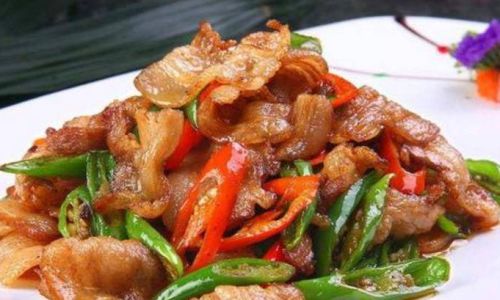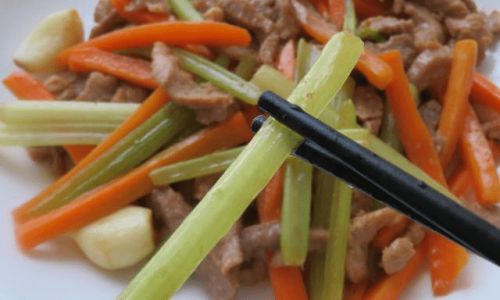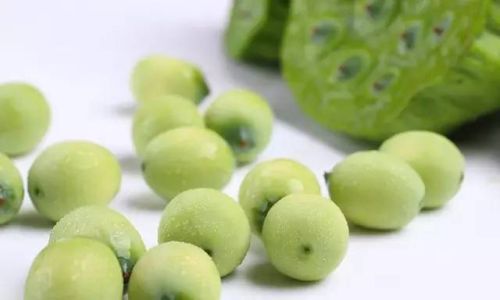Introduction

Stir-frying fresh pork is a culinary art that combines speed, precision, and a keen understanding of ingredient handling to achieve a dish that is both tender and flavorful. Whether you’re preparing a simple family dinner or entertaining guests, mastering the technique of stir-frying pork can elevate your cooking to new heights. This guide will walk you through the process, from selecting the right cut of pork to perfecting your stir-fry technique, ensuring that your fresh pork turns out moist, juicy, and bursting with flavor.
Section 1: Choosing the Right Cut of Pork
The first step in creating a delicious stir-fried pork dish is selecting the appropriate cut of meat. Different cuts have varying textures and fat contents, which can significantly impact the final outcome.
1 Pork Shoulder (Pork Butt or Pork Blade Steak)
While not traditionally thought of as a stir-fry meat, pork shoulder can be sliced thinly against the grain and used successfully. It has a good balance of fat and lean meat, which can result in a juicy, flavorful stir-fry if cooked properly.
2 Pork Tenderloin
This lean, tender cut is often a favorite for stir-fries. It’s easy to slice into thin strips or cubes, retains moisture well, and cooks quickly. However, it can be prone to drying out if overcooked, so careful attention to cooking time is crucial.
3 Pork Loin
The loin is another versatile cut suitable for stir-frying. It’s leaner than shoulder but has more marbling than tenderloin, providing a good balance of flavor and texture.
4 Pork Belly
For those who love a bit of fat in their stir-fry, pork belly can be an excellent choice when sliced thinly. The fat renders during cooking, adding flavor and moisture to the dish.
Section 2: Preparation Techniques
Once you’ve chosen your cut, proper preparation is key to achieving tender, flavorful stir-fried pork.
1 Slicing the Meat
Always slice the pork against the grain. This means cutting perpendicular to the muscle fibers, which helps to shorten them and make the meat more tender. For stir-fries, aim for thin slices or small cubes to ensure even cooking.
2 Marinating
Marinating the pork can add layers of flavor and help to tenderize the meat. A simple marinade of soy sauce, rice vinegar, garlic, ginger, and a touch of sugar or honey can work wonders. Allow the pork to marinate for at least 30 minutes, preferably in the refrigerator, to ensure the flavors penetrate deeply.
3 Velveting (Optional)
Velveting is a Chinese cooking technique that involves coating sliced meat in a starch slurry (usually cornstarch or potato starch) before stir-frying. This creates a smooth, tender texture by sealing in moisture and preventing the meat from overcooking. After marinating, drain the pork, toss it in the starch slurry, and let it sit for about 15 minutes before cooking.
Section 3: Stir-Frying Techniques
Now that your pork is prepared, it’s time to focus on the stir-frying process. The key to success is a hot wok or pan, a bit of oil, and rapid cooking.
1 Heating the Pan
Preheat your wok or large frying pan over high heat until it’s very hot. This ensures that the pork will sear immediately upon contact, locking in juices and flavor.
2 Adding Oil

Use a high-smoking-point oil such as peanut, vegetable, or grapeseed oil. Add just enough to coat the bottom of the pan. The oil should shimmer but not smoke.
3 Stir-Frying the Pork
Add the pork to the hot pan in a single layer, avoiding overcrowding. This allows for even cooking and prevents the meat from steaming rather than stir-frying. Stir constantly with a spatula or wok spoon, ensuring all sides are evenly browned.
4 Timing is Crucial
Stir-fry the pork for just a few minutes, depending on the thickness of the slices or cubes. The goal is to cook it until it’s just barely pink inside or reaches your desired doneness. Overcooking will result in dry, tough meat.
5 Removing the Pork
Once the pork is cooked, transfer it to a plate. This stops the cooking process and prevents it from overcooking in the residual heat.
Section 4: Adding Vegetables and Sauce
Stir-fries are not just about the meat; the vegetables and sauce play crucial roles in creating a balanced, flavorful dish.
1 Choosing Vegetables
Select vegetables that cook quickly, such as bell peppers, snap peas, broccoli florets, carrots (sliced thinly), and baby corn. You can also use leafy greens like spinach or bok choy, adding them towards the end of cooking as they wilt quickly.
2 Stir-Frying Vegetables
In the same hot pan, add a bit more oil if needed and stir-fry the vegetables over high heat. Start with harder vegetables like carrots and bell peppers, adding softer ones like snap peas and leafy greens later. Stir constantly to prevent burning.
3 Combining Pork and Vegetables
Once the vegetables are tender-crisp, return the cooked pork to the pan. If using a sauce, pour it over the pork and vegetables, stirring to coat everything evenly. Cook for an additional minute or two, just until heated through.
Section 5: Making a Sauce
A good sauce can transform a simple stir-fry into a gourmet dish. Here’s a basic recipe you can customize to your taste.
1 Basic Stir-Fry Sauce
-
Ingredients:
- 3 tablespoons soy sauce
- 1 tablespoon oyster sauce (optional)
- 1 tablespoon hoisin sauce (optional)
- 1 tablespoon rice vinegar or Shaoxing wine
- 1 teaspoon sesame oil
- 1 teaspoon cornstarch mixed with 2 tablespoons water (for thickening)
- 1-2 cloves garlic, minced
- 1 piece (1-inch) fresh ginger, minced
- A pinch of white pepper
- Sugar or honey to taste (optional)
-
Instructions:
- In a small bowl, whisk together the soy sauce, oyster sauce, hoisin sauce, rice vinegar or wine, sesame oil, and cornstarch slurry.
- In a hot pan with a bit of oil, sauté the minced garlic and ginger until fragrant (about 30 seconds).
- Pour in the sauce mixture and cook, stirring constantly, until it thickens slightly.
- Adjust seasoning with sugar or honey if desired.
Conclusion
Stir-frying fresh pork is a quick and delicious way to enjoy this versatile meat. By selecting the right cut, preparing it properly, and mastering the stir-fry technique, you can create a dish that is tender, juicy, and bursting with flavor. Don’t forget the importance of fresh vegetables and a well-balanced sauce to complement your pork. With practice, you’ll soon be able to whip up a restaurant-quality stir-fry in no time, delighting your family and friends with every bite.
Remember, the key to successful stir-frying is to keep everything moving and cook over high heat. This ensures that your pork stays moist and tender while the vegetables retain their crispness. Experiment with different cuts of pork, vegetables, and sauce combinations to find your perfect stir-fry recipe. Happy cooking!




0 comments